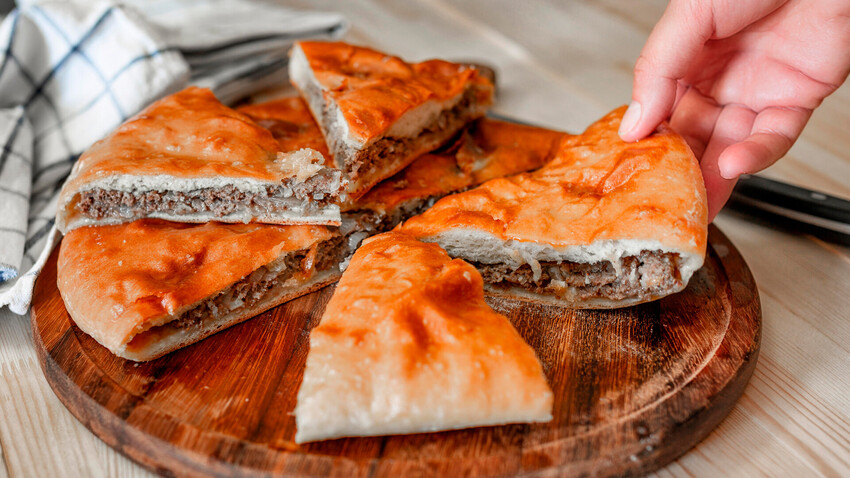
In the Caucasus region, you can find a pie for every taste – with minced meat, with cheese, with herbs, with potatoes and even with beet leaves/greens.
Legion Media
Ossetian pie with cheese.
Legion MediaRound or triangular pies that have a 30-40 centimeter diameter with different fillings are made in North Ossetia for religious and official holidays. For joyous occasions, hostesses put three pies on the table, which symbolize God, the sun and the earth. Only two pies, however, are made when there’s a sorrowful feast, such as a funeral, because the deceased will never again see the sun.
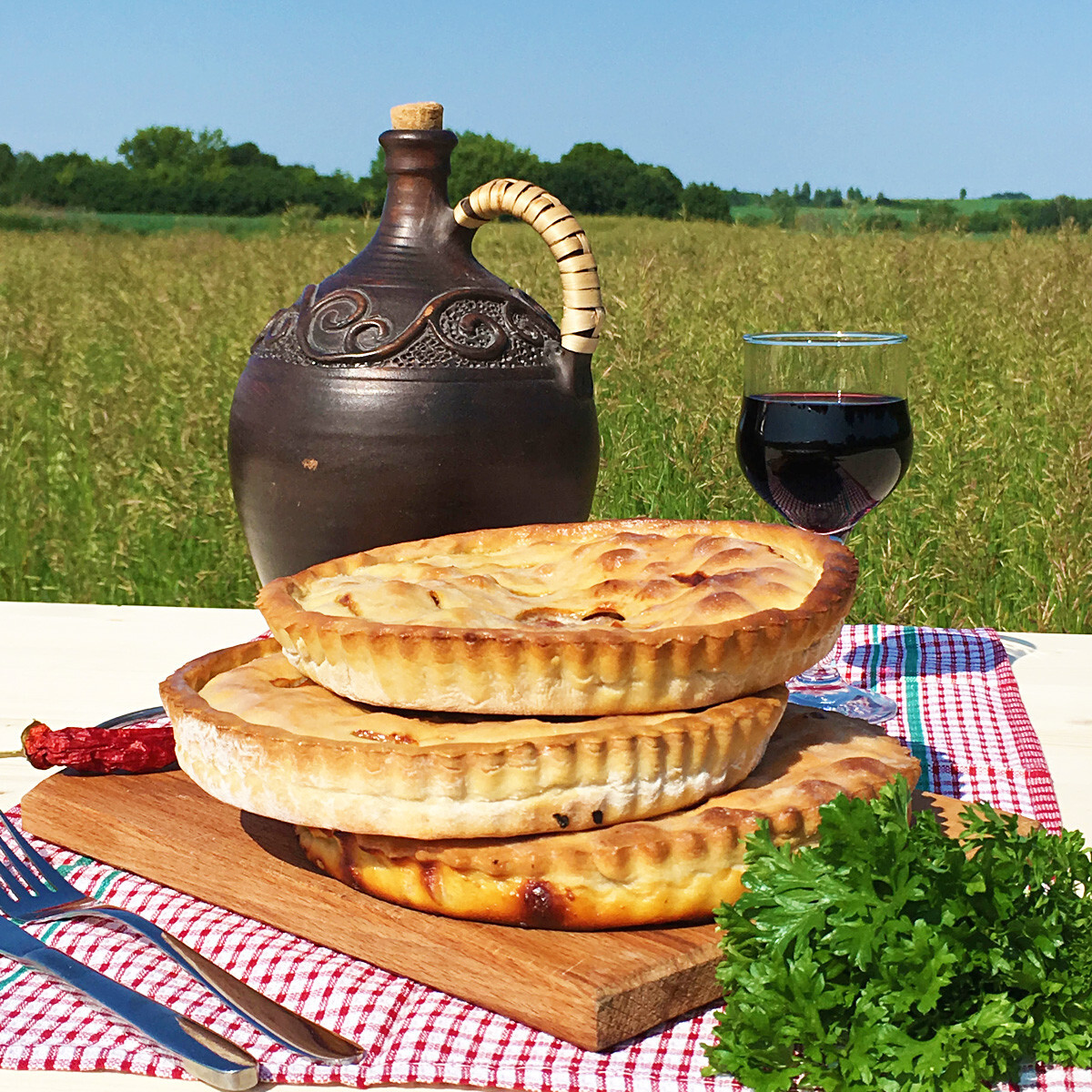
Ossetian pie has become so popular with Russians that you can find them in every city, as hundreds and even thousands of shops make this popular Caucasian dish.
Zalina PlekhanovaThe most popular Ossetian pies are made with minced meat (fyddzhin), beet leaves/greens (tsakharadzhin), cheese (ualibakh), and potatoes (kartofdzhin).
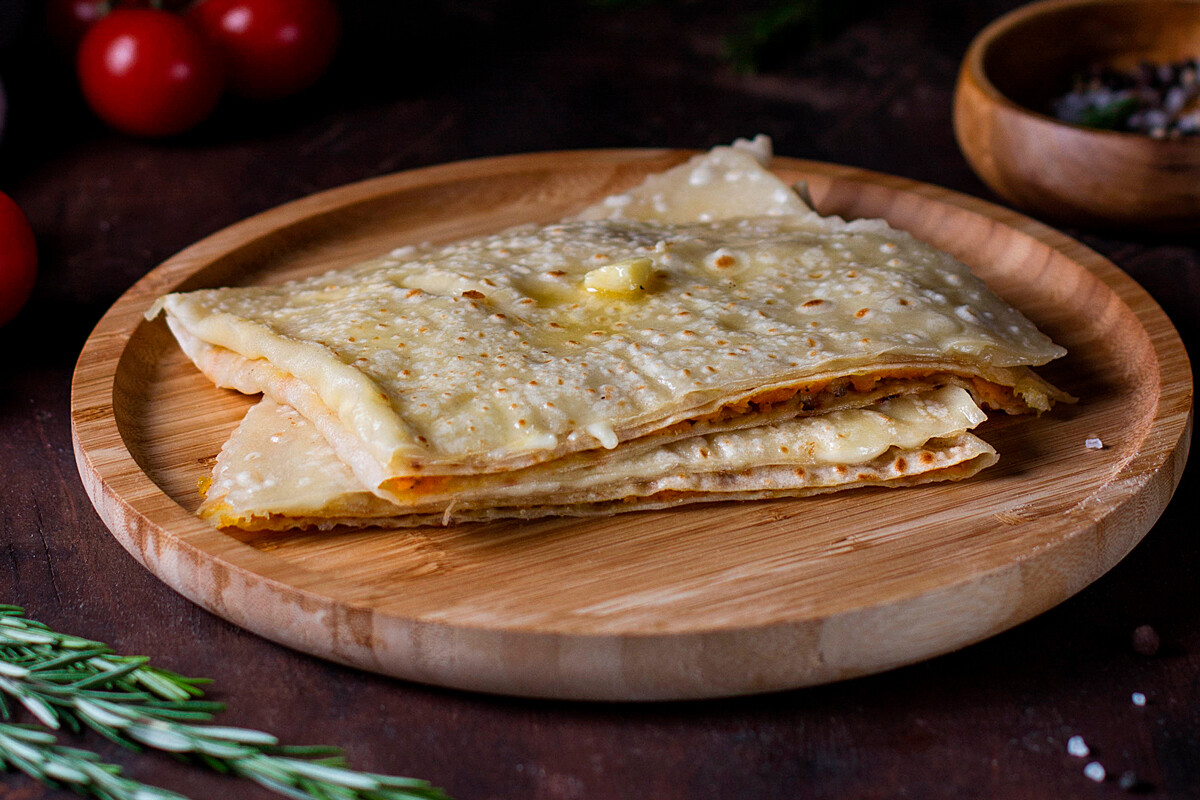
Chudu are made from both unleavened dough and yeast dough.
Legion MediaThis stuffed flatbread, fried on a dry pan, is widespread in Dagestan, Ingushetia, Chechnya, and Kabardino-Balkaria. Chudu are round or have a semi-circular shape. They’re made from both unleavened dough and yeast dough. Sometimes the dough is mixed with ayran (a fermented milk product).
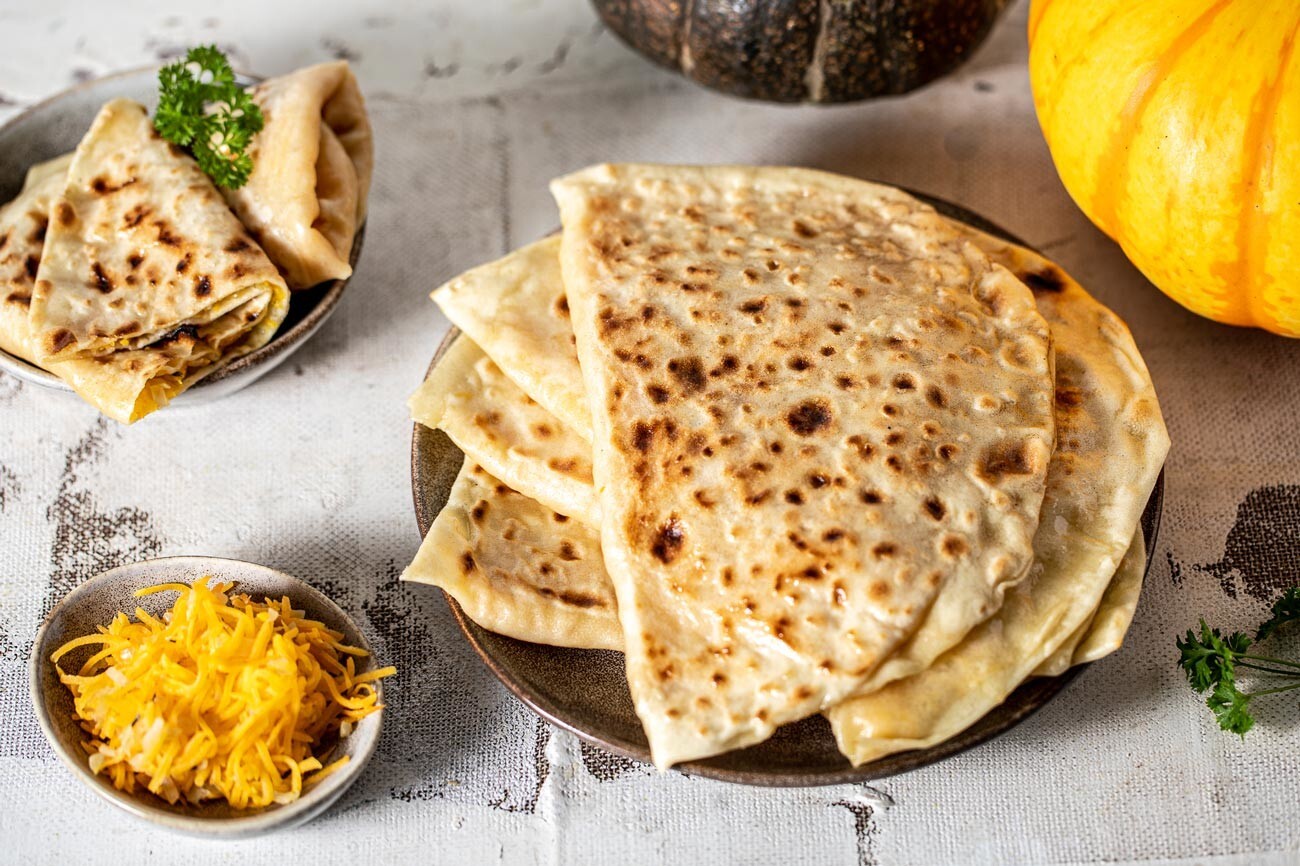
Chudu with pumpkin.
Yulia MulinoThere are chudu with meat – usually mutton or beef (et chudu), with cottage cheese (bishlak chudu), with pumpkin (k’abak chudu), with sour milk (chiy chudu); there’s also a lot of different varieties with herbs – using onions, nettle, orach, or sorrel.

Khychin with herbs.
Legion MediaThis juicy flatbread in the shape of the sun is an obligatory dish at dinner in the Karachay-Cherkessia and Kabardino-Balkaria republics. The Balkars bake them thin and flat, while the Karachays bake them very puffy with a lot of filling. In the olden days, they were baked for religious holidays, today – for family feasts.
Classic cheese khychins are called khumuzhu khychin, but they are no less tasty with meat, cabbage, or potatoes.
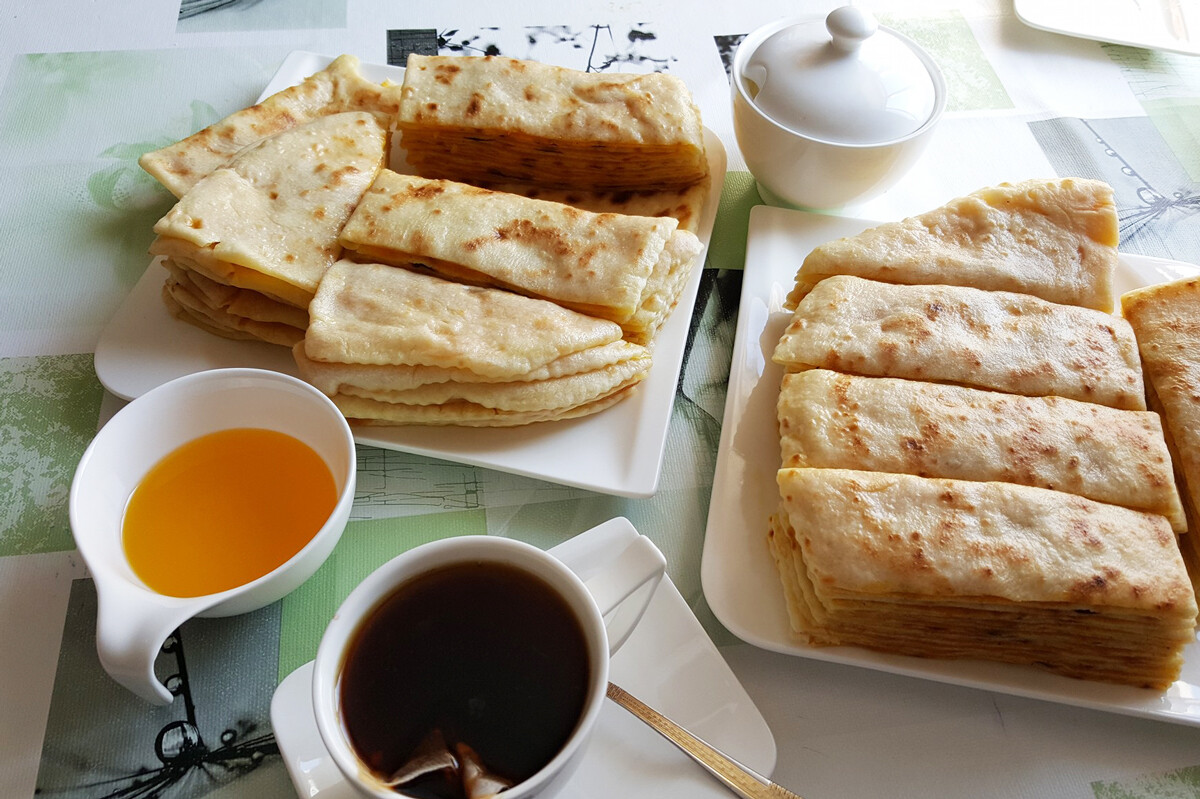
Khingalsh is a national dish in Chechnya and Ingushetia.
Muhammad Sugaipov (CC BY-SA 3.0)This flatbread made from dough mixed with corn or wheat flour with kefir or ayran is a national dish in Chechnya and Ingushetia. In the olden days, the tradition was to bake khingalsh in the size of a one-year-old baby’s forearm, and then offer these pies to relatives and neighbors when the child took its first steps.
Khingalsh is made with a pumpkin-onion filling. Despite the bitterness of the onion, the filling is sufficiently sweet; and some aromatic thyme is also added.
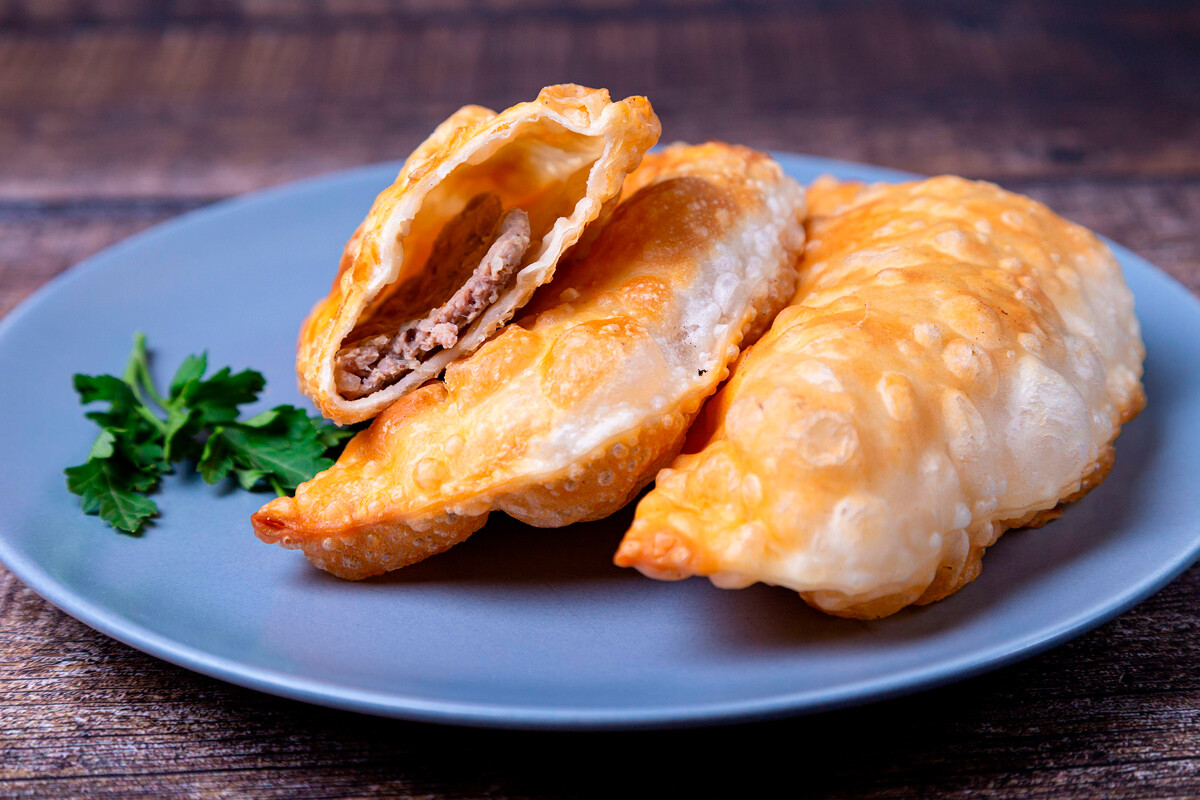
For some people, a cheburek is considered fast food, for others it’s a delicious gourmet treat.
Legion MediaChebureki are quite popular as street food in Russia; you can buy them at a train station, near a metro, or in cafes that are called cheburechnaya. However, this dish has been prepared in many regions of the Caucasus since ancient times.
In Ingushetia, fresh mutton is chosen when making chebureki; a lot of herbs (parsley or cilantro) and boiled rice are added to the filling. Another recipe for chebureki that’s also widespread is when the filling is prepared without rice but with ripe tomatoes.
Real Caucasus chebureki are made in a kazan on melted lamb fat. Cold milk products are a perfect match, such as kefir, ayran, or milk.

Michari is a corn pie or bread with onion.
Legion MediaThis corn pie or bread with onion – michari – is considered a traditional dish of the Kumyks, the largest Turkic people of the North Caucasus. This round pie has a diameter of 25 centimeters, and it’s made from corn flour with a pinch of soda and a large amount of kefir. The pie comes out high, porous, and entirely delicious thanks to the stewed onion.
The locals have a saying that highlights the large amount of onion in the pie and its nutritious qualities: “A half of a michari and a whole onion head are a proper intake for a man.”

Tsken is very hearty.
Legion MediaThis is a meat pie that the Lezgins use for celebration; they live in southern Dagestan. The pie consists of mutton, potatoes, onions, walnuts, and spices. The filling alternates with thin layers of dough. This pie is very hearty – most often it’s prepared in an oven during the cold weather months.
Dear readers,
Our website and social media accounts are under threat of being restricted or banned, due to the current circumstances. So, to keep up with our latest content, simply do the following:
Subscribe to our Telegram channels: Russia Beyond and The Russian Kitchen
Subscribe to our weekly email newsletter
Enable push notifications on our website
Install a VPN service on your computer and/or phone to have access to our website, even if it is blocked in your country
If using any of Russia Beyond's content, partly or in full, always provide an active hyperlink to the original material.
Subscribe
to our newsletter!
Get the week's best stories straight to your inbox